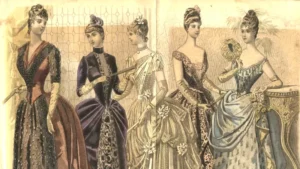Introduction
The business suit is a statement rather than just an outfit in the professional environment. It exudes confidence, professionalism, and regard for the wearer as well as the occasion. Whether you’re a new graduate in the workforce or an experienced CEO, knowing the subtleties of business clothing can help you stand out.
The History of the Business Suit
Since the 19th century, when the business suit first appeared, it has undergone substantial change. Originally intended as a status symbol for the affluent, it has evolved into a necessary piece of apparel for professionals. The sleek, tailored fit and simple lines of the modern business suit are the product of years of fashion development.
Selecting the Right Suit
Fabric and Quality: Selecting the right fabric is crucial when buying a work suit. Wool is a traditional option since it is durable and breathable. Lighter materials, like cotton or linen, might be better in hot areas.
Fit and Tailoring : A well tailored suit is essential. It should be comfortable to move in, just snug enough to not be too tight. To make sure your suit is tailored precisely to your shape, think about hiring a tailor.
Color and Pattern: Conventional hues like black, gray, and navy are adaptable and suitable in most professional contexts. To keep things looking professional, patterns like light checks or pinstripes should be kept modest.
Accessorizing Your Suit
Ties and Pocket Squares: A silk tie gives a business outfit an air of sophistication. Even if it’s optional, the pocket square can provide some character and color.
Shoes and Belts: Brown or black leather shoes are a good choice. To create a unified look, make sure your shoes and belt match.
Caring for Your Suit
To keep your suit looking its best, dry clean it occasionally and use a high-quality hanger to maintain its form. Ironing will not hurt you if you steam regularly to erase wrinkles.
The Evolution of Women’s Business Attire
From the traditional, conservative designs of the past, women’s business suits have evolved significantly. They now have the same professional, confident, and empowering qualities that have long been connected to men’s suits.
Choosing the Right Suit
Fabric and Fit : The selection of material and fit is equally crucial for ladies as it is for men. Look for suits that are comfortable and long-lasting made of wool, cotton, or mixes. Without being overly tight or constricting, the fit should be attractive and highlight the natural contour.
Style Variations: Dress suits, pant suits, and skirt suits are just a few of the types available for women’s suits. Traditional and well accepted in most business settings are skirt suits. Pant suits provide flexibility in movement and a contemporary style. A dress and matching jacket make up a dress suit, which offers a polished yet feminine option.
Conclusion
A business suit serves as a tool for creating a good first impression in addition to being apparel. You can convey a sense of taste and professionalism by dressing appropriately and taking good care of your suit.
FAQ
How often should I dry clean my suit? Just when it’s very essential. The life of your suit may be shortened by frequent dry washing.
Can I wear a business suit without a tie? Yes, but for a polished appearance, make sure your suit is buttoned up and your shirt fits properly.
Are colorful suits acceptable in the business world? Conservative areas are best served by sticking to classic hues, even though creative industries may tolerate more vivid colors.





















